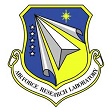AFRL posts BAA for next generation intelligence collection and analyses
 On August 9, the U.S. Air Force Research Laboratory posted a broad agency announcement for Next Generation Intelligence Collection and Analyses (BAA NUMBER: BAA-RIK-2015-0006). For best consideration for FY17 funding, the agency recommends white papers be received by November 1, 2016.
On August 9, the U.S. Air Force Research Laboratory posted a broad agency announcement for Next Generation Intelligence Collection and Analyses (BAA NUMBER: BAA-RIK-2015-0006). For best consideration for FY17 funding, the agency recommends white papers be received by November 1, 2016.
The Air Force Research Laboratory – Information Directorate (AFRL/RI) is soliciting white papers under this BAA for research, design, development, test, evaluation and experimentation of innovative technologies and techniques for Next Generation Intelligence Collection and Analyses.
The objective of the BAA is to develop, demonstrate, and evaluate new sources and methods for collecting and analyzing intelligence data. This effort is expected to provide research and development activities to enhance warfighter mission capabilities and advance baseline performance beyond what is currently considered satisfactory. Under the proposed announcement, it is anticipated that intelligence collection and analysis technologies will be used in support of Strategic, Operational, and Tactical missions. These should include, but are not limited to, Signals Intelligence, Measurement & Signals Intelligence, and Electronic Intelligence techniques.
Efforts under this program are expected to provide the DoD and other identified partners with algorithms, architectures, and system frameworks flexible enough to interoperate with any ISR (Intelligence, Surveillance, and Reconnaissance) assets necessary. This includes fusion of multiple sensors and the management of the large quantities of data generated by modern sensors (commonly referred to as “big data”). The algorithms, architectures, and framework will provide an infrastructure that is extensible to all levels of the battlespace including Air, Space, and Cyber Space.
Research and development efforts under this program are expected to result in improved capabilities for collecting and analyzing data gathered from DoD and mission partners’ intelligence assets. The effectiveness of the enhancements to software, systems, and sensors currently in operational use will be assessed through testing and evaluation activities. Technology innovations that deliver new or improved operational capabilities are of high interest. Offerors are encouraged to describe the pre-conditions that are necessary for the proposed techniques to work effectively.
Full information is available here.
Source: FedBizOpps







